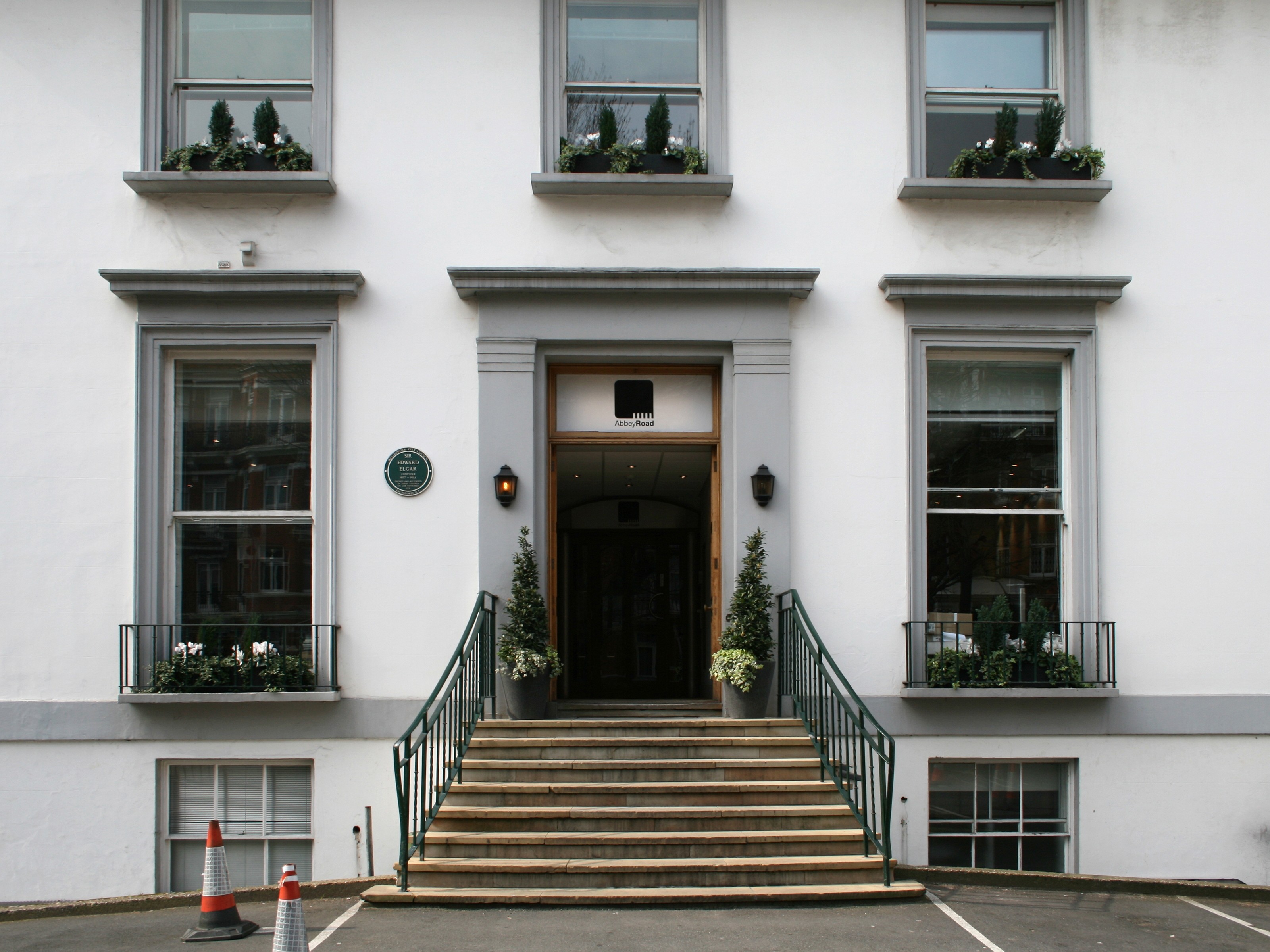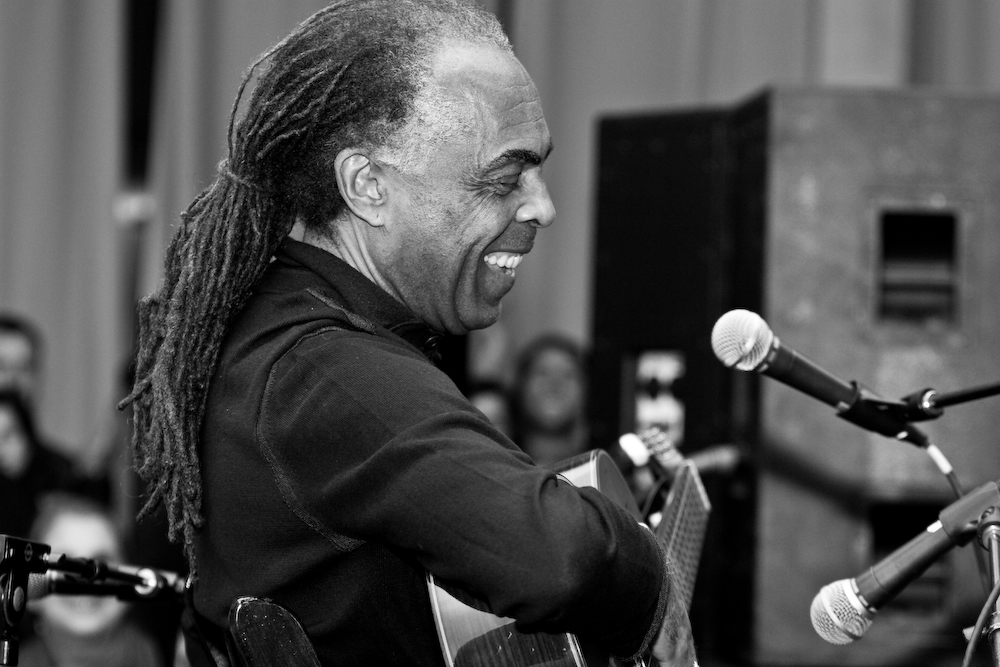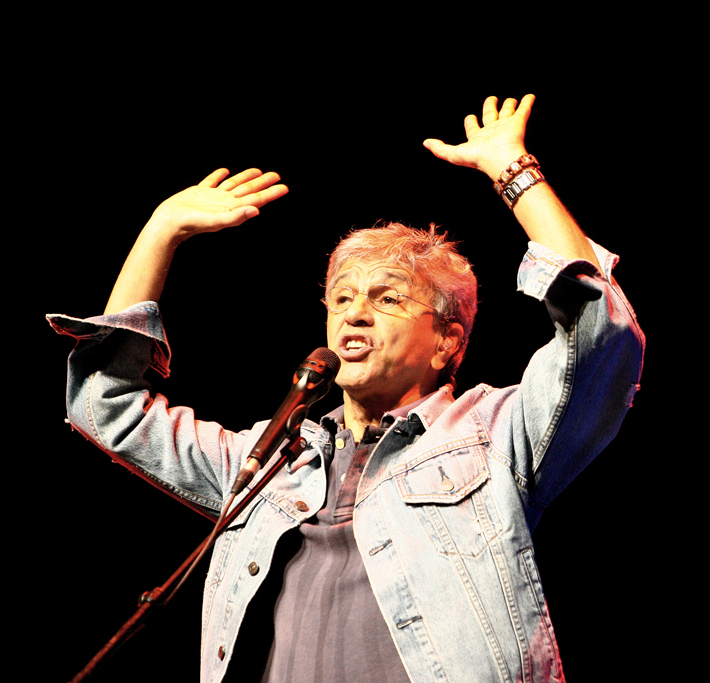|
Manifesto Antropófago
The Anthropophagic Manifesto (Portuguese language, Portuguese: '), also variously translated as the Cannibal Manifesto or the Cannibalist Manifesto, is an essay published in 1928 by the Brazilian poet and polemicist Oswald de Andrade, a key figure in the cultural movement of Brazilian Modernism and contributor to the publication ''Revista de Antropofagia''. It was inspired by "''Abaporu''," a painting by Tarsila do Amaral, modernist artist and wife of Oswald de Andrade. The essay was translated to English in 1991 by Leslie Bary. Content Written in poetic prose in the modernist style of ''Une Saison en Enfer'' by Rimbaud, the ''Manifesto Antropófago'' is more directly political than Oswald's previous manifesto, ''Manifesto Pau-Brasil'', which was created in the interest of propagating a Brazilian poetry for export. The "Manifesto" has often been interpreted as an essay in which the main argument proposes that Brazil's history of "cannibalizing" other cultures is its greates ... [...More Info...] [...Related Items...] OR: [Wikipedia] [Google] [Baidu] |
Tarsila Do Amaral
Tarsila de Aguiar do Amaral (; 1 September 1886 – 17 January 1973) was a Brazilian painter, draftswoman, and translator. She is considered one of the leading Latin American modernist artists, and is regarded as the painter who best achieved Brazilian aspirations for nationalistic expression in a modern style.Lucie-Smith, Edward. Latin American Art of the 20th Century. London: Thames & Hudson Ltd, 2004: 42. As a member of the '' Grupo dos Cinco'', Tarsila is also considered a major influence in the modern art movement in Brazil, alongside Anita Malfatti, Menotti Del Picchia, Mário de Andrade, and Oswald de Andrade. She was instrumental in the formation of the aesthetic movement, '' Antropofagia'' (1928–1929); in fact, Tarsila was the one with her celebrated painting, '' Abaporu'', who inspired Oswald de Andrade's famous ''Manifesto Antropófago''. Early life and education Tarsila do Amaral was born in Capivari, a small town in the countryside of the state of São Paulo. ... [...More Info...] [...Related Items...] OR: [Wikipedia] [Google] [Baidu] |
Tupi Or Not Tupi, That Is The Question
''Tupi or not Tupi, that is the question'' (in the original spelling, ''Tupy or not Tupy, that is the question'') is a pun present in the '' Anthropophagic Manifesto'' launched by the group of modernist artists gathered around Oswald de Andrade, who produced the ''Revista de Antropofagia'' (in English, ''Anthropophagy Magazine''). It is one of the most famous and quoted aphorisms from the ''Anthropophagic Manifesto'', published in May 1928 by Andrade in the first issue of the ''Revista de Antropofagia''. The ''Anthropophagic Manifesto'' is illustrated by the painting '' Abaporu'', which Andrade had received as a gift from his partner, Tarsila do Amaral. Patrícia Galvão, also known as Pagu, Andrade's companion after Amaral, was also part of the group. The manifesto was published in "Piratininga, Year 374 of the Devouring of Bishop Sardinha." Andrade's ''Tupi or not Tupi, that is the question'' had a profound impact on the way indigenous cultures were viewed in Brazil, radicall ... [...More Info...] [...Related Items...] OR: [Wikipedia] [Google] [Baidu] |
Jimi Hendrix
James Marshall "Jimi" Hendrix (born Johnny Allen Hendrix; November 27, 1942September 18, 1970) was an American singer-songwriter and musician. He is widely regarded as one of the greatest and most influential guitarists of all time. Inducted into the Rock and Roll Hall of Fame in 1992 as a part of his band, the Jimi Hendrix Experience, the institution describes him as "arguably the greatest instrumentalist in the history of rock music." Born in Seattle, Washington, Hendrix began playing guitar at age 15. In 1961, he enlisted in the US Army, but was discharged the following year. Soon afterward, he moved to Clarksville, then Nashville, Tennessee, and began playing gigs on the Chitlin' Circuit, earning a place in the Isley Brothers' backing band and later with Little Richard, with whom he continued to work through mid-1965. He then played with Curtis Knight and the Squires. Hendrix moved to England in late 1966, after bassist Chas Chandler of the Animals became his ma ... [...More Info...] [...Related Items...] OR: [Wikipedia] [Google] [Baidu] |
The Beatles
The Beatles were an English Rock music, rock band formed in Liverpool in 1960. The core lineup of the band comprised John Lennon, Paul McCartney, George Harrison and Ringo Starr. They are widely regarded as the Cultural impact of the Beatles, most influential band in Western popular music and were integral to the development of Counterculture of the 1960s, 1960s counterculture and the recognition of popular music as an art form. Rooted in skiffle, beat music, beat and 1950s rock and roll, rock 'n' roll, their sound incorporated elements of classical music and traditional pop in innovative ways. The band also explored music styles ranging from Folk music, folk and Music of India, Indian music to Psychedelic music, psychedelia and hard rock. As Recording practices of the Beatles, pioneers in recording, songwriting and artistic presentation, the Beatles revolutionised many aspects of the music industry and were often publicised as leaders of the Baby boomers, era's youth and soc ... [...More Info...] [...Related Items...] OR: [Wikipedia] [Google] [Baidu] |
Tropicália
Tropicália (), also known as tropicalismo (), was a Brazilian art movement that arose in the late 1960s. It was characterized by the amalgamation of Brazilian genres—notably the union of the popular and the avant-garde, as well as the melding of Brazilian tradition and foreign traditions and styles. Today, tropicália is chiefly associated with the musical faction of the movement, which merged Brazilian and African rhythms with British and American psychedelia and pop rock. The movement also included works of film, theatre, and poetry. The term tropicália (tropicalismo) has multiple connotations in that it played on images of Brazil being that of a "tropical paradise".Veloso, Caetano, Barbara Einzig, and Isabel de Sena. 2003. Tropical truth: a story of music and revolution in Brazil. Tropicalia was presented as a "field for reflection on social history". The movement was begun by a group of musicians from Bahia notably Caetano Veloso, Gilberto Gil, Gal Costa, Tom Zé, an ... [...More Info...] [...Related Items...] OR: [Wikipedia] [Google] [Baidu] |
Caetano Veloso
Caetano Emanuel Viana Teles Veloso (; born 7 August 1942) is a Brazilian composer, singer, guitarist, writer, and political activist. Veloso first became known for his participation in the Brazilian musical movement Tropicália, which encompassed theatre, poetry and music in the 1960s, at the beginning of the Military dictatorship in Brazil, Brazilian military dictatorship that 1964 Brazilian coup d'état, took power in 1964. He has remained a constant creative influence and best-selling performing artist and composer ever since. Veloso has won nineteen Brazilian Music Awards, nine Latin Grammy Awards and two Grammy Awards. On 14 November, Latin Grammy Awards of 2012, 2012, Veloso was honored as the Latin Recording Academy Person of the Year. Veloso was one of seven children born into the family of José Telles Veloso (commonly known as ''Seu Zeca''), a government official, and Dona Canô, Claudionor Viana Telles Veloso (known as ''Dona Canô''). He was born in the city of Sant ... [...More Info...] [...Related Items...] OR: [Wikipedia] [Google] [Baidu] |
Hélio Oiticica
Hélio Oiticica (; July 26, 1937 – March 22, 1980) was a Brazilian visual artist, sculptor, painter, performance artist, and theorist best known for his participation in the Neo-Concrete Movement, for his innovative use of color, and for what he later termed "environmental art," which included ''Parangolés'' and ''Penetrables,'' like the famous '' Tropicália.'' Oiticica was also a filmmaker and writer. Early life and education Oiticica was born in Rio de Janeiro, Brazil to mother Ângela Santos Oiticica and father José Oiticica Filho, Oiticia had two younger brothers (architect) César Oiticica and Cláudio Oiticica. Oiticica's family was educated and involved in liberal politics. His father taught mathematics, was an engineer, entomologist, and lepidopterologist, a scientist who researched butterflies. He was also an avid photographer, creating experimental photographs that were new to Brazil. His grandfather was a well known philologist, who studied literary text ... [...More Info...] [...Related Items...] OR: [Wikipedia] [Google] [Baidu] |
Augusto De Campos
Augusto de Campos (born 14 February 1931) is a Brazilian writer who (with his brother Haroldo de Campos) was a founder of the Concrete poetry movement in Brazil. He is also a translator, music critic and visual artist. Work In 1952 he founded the literary magazine '' Noigandres'' with his brother. Then in 1956 he and his associates declared the beginning of a movement. Since then he has had a number of collections and honors. From the 1950s to 1970s his main works were directed towards visual poetry but from 1980 on, he intensified his experiments with new media, presenting his poems on electric billboard, videotext, neon, hologram and laser, computer graphics, and multimedia events, involving sound and music, as the plurivocal reading of CIDADECITYCITÉ with his son Cid Campos (1987–91). Four of his holographic poems in cooperation with the holographer Moysés Baumstein were included in the exhibitions TRILUZ (1986) and IDEHOLOGIA (1987). A "videoclippoem", O PULSAR, wit ... [...More Info...] [...Related Items...] OR: [Wikipedia] [Google] [Baidu] |
Concrete Poetry
Concrete poetry is an arrangement of linguistic elements in which the typographical effect is more important in conveying meaning than verbal significance. It is sometimes referred to as visual poetry, a term that has now developed a distinct meaning of its own. Concrete poetry relates more to the visual than to the verbal arts although there is a considerable overlap in the kind of product to which it refers. Historically, however, concrete poetry has developed from a long tradition of shaped or patterned poems in which the words are arranged in such a way as to depict their subject. Development Though the term 'concrete poetry' is modern, the idea of using letter arrangements to enhance the meaning of a poem is old. Such shaped poetry was popular in Greek Alexandria during the 3rd and 2nd centuries BCE, although only the handful which were collected together in the ''Greek Anthology'' now survive. Examples include poems by Simmias of Rhodes in the shape of an egg, wings and a ha ... [...More Info...] [...Related Items...] OR: [Wikipedia] [Google] [Baidu] |
Anthropophagic Movement
The anthropophagic movement ( Portuguese: ''Movimento antropofágico'') was a Brazilian artistic manifestation of the 1920s founded and theorized by the poet Oswald de Andrade and the painter Tarsila do Amaral. Expanding on the ideology of Poesia Pau-Brasil, also written by Oswald, which wanted to create an export poetry, the anthropophagic movement had the objective of "swallowing" (metaphorical nature of the word "anthropophagic") external cultures, such as the American and European, and internal ones, like that of the Amerindians, Afro-descendants, Euro-descendants and Asian-descendants. Overall, foreign culture should not be denied, but it should not be imitated. In his works, Oswald de Andrade ironized the Brazilian elite's submission to developed countries and proposed the "cultural absorption of imported techniques in order to elaborate them autonomously, and convert them into an export product". ''Manifesto Antropófago'' The ''Manifesto Antropófago'' (or ''Manifes ... [...More Info...] [...Related Items...] OR: [Wikipedia] [Google] [Baidu] |
To Be, Or Not To Be
"To be, or not to be" is a speech given by Prince Hamlet in the so-called "nunnery scene" of William Shakespeare's play ''Hamlet'' (Act 3, Scene 1). The speech is named for the opening phrase, itself among the most widely known and quoted lines in modern English literature, and has been referenced in many works of theatre, literature and music. In the speech, Hamlet contemplates death and suicide, weighing the pain and unfairness of life against the alternative, which might be worse. It is not clear that Hamlet is thinking of his own situation since the speech is entirely in an abstract, somewhat academic register that accords with Hamlet's status as a (recent) student at Wittenberg University. Furthermore, Hamlet is not alone as he speaks because Ophelia is on stage waiting for him to see her, and Claudius and Polonius have concealed themselves to hear him. Even so, Hamlet seems to consider himself alone and there is no definite indication that the others hear him before he ... [...More Info...] [...Related Items...] OR: [Wikipedia] [Google] [Baidu] |
Jean De Léry
Jean de Léry (1536–1613) was an explorer, writer and Reformed pastor born in Lamargelle, Côte-d'Or, France. Scholars disagree about whether he was a member of the lesser nobility or merely a shoemaker. Either way, he was not a public figure prior to accompanying a small group of fellow Protestants to their new colony on an island in the Bay of Rio de Janeiro, Brazil from 1557 to 1558. There he produced the first known transcriptions of native American music: two chants of the Tupinambá, near Rio de Janeiro. The colony, France Antarctique was founded by the Chevalier de Villegaignon, with promises of religious freedom, but on arrival, the Chevalier contested the Protestants' beliefs and persecuted them. After eight months the Protestants left their colony and survived for a short time on the mainland, living amongst the Tupinambá Indians. These events were the basis of de Lery's book, ''History of a Voyage to the Land of Brazil, Also Called America'' (1578). Exhausted and s ... [...More Info...] [...Related Items...] OR: [Wikipedia] [Google] [Baidu] |









